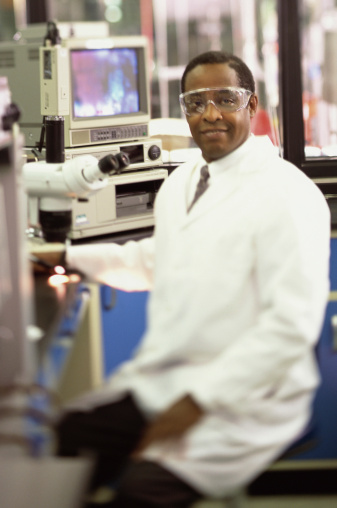ED After Transperineal Prostate Biopsy Generally Improves Within 3-6 Months

Sometimes, men develop erectile dysfunction (ED) after a transperineal prostate biopsy. However, new research shows that such ED is usually temporary and that erections don’t typically worsen three to six months after biopsy.
A biopsy is a surgical procedure that helps doctors determine if a patient has cancer. In a prostate biopsy, a needle is used to remove small amounts of tissue from different areas of the prostate gland. An expert then analyzes the tissue samples and looks for cancer cells.
==================================================
ED after transperineal prostate biopsy generally improves within 3-6 months, study says. (Click to tweet)
==================================================
A prostate biopsy is usually done in one of three ways: through the rectum, through the urethra (the tube that allows urine and semen to leave the body), or through the perineum (the area between the scrotum and the anus).
Most of the time, a prostate biopsy is done on an outpatient basis at the doctor’s office. An estimated one million prostate biopsies are performed in the United States each year.
In this study, a pair of researchers from Italy wanted to know how a transperineal prostate biopsy (through the perineum) would affect men’s erections.
They collected information from 1,050 patients between the ages of 56 and 71 who had this type of biopsy. Just before surgery - and again at one, three, and six months following surgery - the men completed a questionnaire about their erections.
The scientists found that the men’s risk of ED increased about 5% after surgery. When ED did occur, it was moderate at the one month mark, but generally got better within three to six months. At six months, men’s erections usually were not worse than they were before biopsy.
When discussing prostate biopsy, men are encouraged to discuss their concerns with their doctor, including any worries about erections. Their doctor can give them the best advice for their personal situation.
The study appeared online in August in the International Journal of Impotence Research.
Resources
American Cancer Society
“How is prostate cancer diagnosed?”
(Last revised: March 12, 2015)
http://www.cancer.org/cancer/prostatecancer/detailedguide/prostate-cancer-diagnosis
International Journal of Impotence Research
Pepe, P. and M. Pennisi
“Erectile dysfunction in 1050 men following extended (18 cores) vs saturation (28 cores) vs saturation plus MRI-targeted prostate biopsy (32 cores)”
(Full-text. August 20, 2015)
http://www.nature.com/ijir/journal/vaop/ncurrent/full/ijir201518a.html
Johns Hopkins Medicine
“Prostate Biopsy”
http://www.hopkinsmedicine.org/healthlibrary/test_procedures/urology/prostate_biopsy_92,p07710/
Mayo Clinic
“Types of prostate biopsy procedures”
(April 26, 2013)
http://www.mayoclinic.org/tests-procedures/prostate-biopsy/basics/what-you-can-expect/prc-20013254
You may also be interested in...
Other Popular Articles

What Is Jelqing, and Does It Actually Work?
The term “jelqing” refers to a set of penis stretching exercises that some believe can make the penis bigger. Although the practice has gained attention and popularity in blogs and internet forums in recent years, there is no scientific evidence that it is an effective way to permanently increase the size of one’s penis. In fact, in some cases, jelqing may actually cause damage to the penis, so it is a good idea to get all the facts before setting off to try it.

What Is the Average Penis Size?
If you have ever wondered how your penis compares to others in terms of size, you are not alone. Many men are curious to know how their penises stack up compared to the average. Unfortunately, general curiosity can sometimes give way to full-on obsession and anxiety about penis size. This can be an unhealthy and often unnecessary fixation, especially because most men who think their penises are too small have perfectly normal-sized penises.

What Is Sensate Focus and How Does It Work?
Sensate focus is a technique used to improve intimacy and communication between partners around sex, reduce sexual performance anxiety, and shift away from ingrained, goal-oriented sexual patterns that may not be serving a couple.

What Is Edging and Why Do People Do It?
Edging is the practice of stopping sexual stimulation before reaching orgasm to prolong a sexual experience. The term stems from the concept of approaching the metaphorical “edge” of orgasm but stopping before going over the edge.

Can Sex Reduce Menstrual Cramps?
The SMSNA periodically receives and publishes ‘guest editorials.’ The current article was submitted by Mia Barnes, a freelance writer and researcher who specializes in women's health, wellness, and healthy living. She is the Founder and Editor-in-Chief of Body+Mind Magazine.
Having sex while you experience menstrual cramps is healthy and can provide significant benefits. While it might not be the first activity that comes to mind when your PMS or period cramping begins, many people enjoy sex to reduce menstrual cramps, experience increased pleasure and benefit from other advantages. Learn more about having sex while menstrual cramps are happening and how it can help your body.

Can Sex Throw off Your Vaginal pH Balance?
The SMSNA periodically receives and publishes ‘guest editorials.’ The current article was submitted by Mia Barnes, a freelance writer and researcher who specializes in women's health, wellness, and healthy living. She is the Founder and Editor-in-Chief of Body+Mind Magazine.
Your vagina is a pretty powerful organ. It is a pathway for menstrual blood and babies. It also is a main player in sexual intercourse. You might hear about your vagina’s pH and worry that yours is at risk. Here’s what to know about vaginal pH, including the impacts sex could have.

